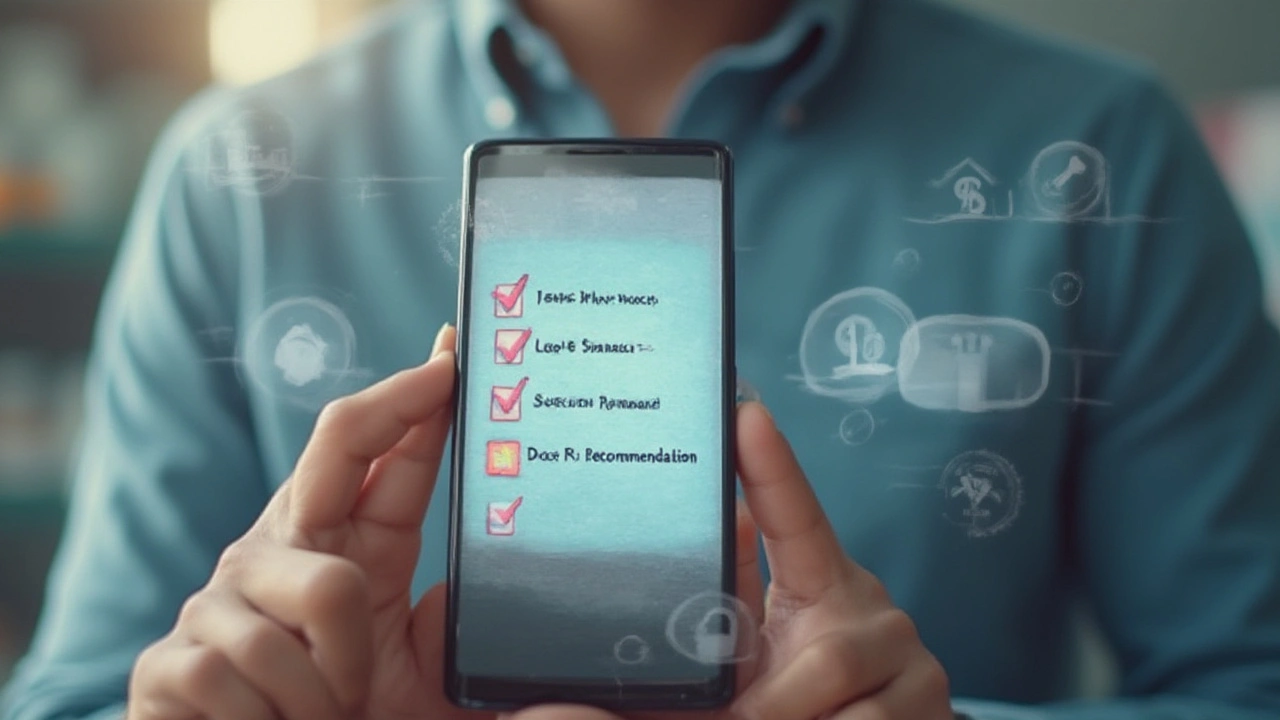Ever had stomach pain that just won’t quit, or that burning feeling after you eat? If you know what I’m talking about, you’ve probably heard of Protonix. It’s a pretty common medication for heartburn, acid reflux, and ulcers—conditions that have so many of us tiptoeing around spicy foods and late-night snacks. Here’s the thing: more people are buying Protonix online now than walking through hectic pharmacy aisles (and honestly, who has time to wait in line with a growling stomach?). But clicking “add to cart” for prescription meds isn’t quite as chill as ordering shoes. There’s confusion, some hidden risks, and a bunch of sketchy websites mixed in with actually helpful options. So, how do you buy Protonix online without regret—or worse, getting the wrong pills?
What is Protonix and Why Might You Need It?
Protonix (pantoprazole) is a proton pump inhibitor—try saying that three times fast. Basically, it lowers your stomach acid production. For people dealing with GERD (gastroesophageal reflux disease), erosive esophagitis, or those persistent stomach ulcers, Protonix is often a lifeline. It doesn’t just squelch the burn; it actually lets your esophagus and stomach heal. Hospitals use it too, sometimes through an IV for serious cases. You can only legally get this med with a prescription in places like the US, Canada, Australia, and most of Europe. If you spot a site offering it “no prescription needed,” that’s your first red flag.
For a little real-world perspective, Protonix was one of the top 50 most commonly prescribed medications in the US as of 2022. Around 12 million scripts were written last year alone, mostly for adults over 40, but it’s used for younger patients with acid-related disorders, too. The dosage varies—usually 20mg or 40mg tablets. Results aren’t instant; most people notice less pain after about two to three days. For severe reflux, doctors might keep you on Protonix for several months. Oh, and here’s an interesting fact: Protonix is usually on insurance formularies and is available as a generic, so you’re not always stuck paying name-brand prices.
Some myths float around that Protonix is just a fancy, overpriced antacid. Not true—antacids like Tums work instantly to neutralize acid, but Protonix actually turns down the “acid tap” in your stomach by blocking certain pumps on your stomach lining. Docs prefer this med for serious or chronic cases, especially when other remedies flop. If you’ve tried every over-the-counter fix and still wind up clutching your chest at night, Protonix might be the right call. But always, always check with your healthcare provider before trying to get it online. Self-diagnosing GERD or ulcers is a gamble you don’t want to take.
With all this in mind, it’s no wonder so many folks look for Protonix online. Work schedules, family obligations, pandemic scares, or simple convenience can make a digital pharmacy super tempting. But, the wild west of the internet can make buying something as important as buy Protonix online feel pretty overwhelming. Let’s untangle how to do it safely, and where legit options are hiding.
How to Buy Protonix Online: Step-by-Step Guide
If you’ve got your prescription, shopping for Protonix online is easier than tracking down a missing sock—if you know what you’re doing. Here’s how to get started without risking your health or wallet.
- Start with your prescription. There’s no way around this. Legit pharmacies cannot (and should not) sell Protonix without seeing a doctor’s note. It’s a safety thing—this is a powerful med with possible side effects and interactions. If a website screams “No Rx Needed!” run for the hills.
- Stick to registered online pharmacies. In the US, you want a pharmacy certified by NABP’s VIPPS program. The badge means the site follows the law and keeps your info private. Canada has CIPA, and the UK follows GPhC. Look for the seal, then click it to make sure it’s not a fake badge. Want a shortcut? Check NABP’s website for a list of good pharmacies.
- Compare prices (don’t just grab the cheapest option). Here’s where things get wild: a 30-day supply of branded Protonix ranges from $150 at some brick-and-mortar chains, but generics online may drop to just $12. If the price is “too good to be true”—like $2 for a full box—it’s either counterfeit, expired, or a straight-up scam. The legit prices fall somewhere between the pharmacy counter and what you find on coupon sites like GoodRx.
- Check customer support and privacy policies. If a pharmacy doesn’t have simple ways to contact them or a privacy policy, cross them off your list. Dodgy sites will avoid giving any real info about who they are, where they’re based, or how they protect your credit card number.
- Use a secure payment method. Don’t wire cash, use cryptocurrency, or send checks to sketchy addresses. Stick to credit cards or established third-party processors (like PayPal, if offered).
- Review shipping options and timings. American sites usually ship within 2-4 business days if your Rx is ready. Canadian and international sellers can take 2-3 weeks, so don’t wait until you’re on your last pill. Make sure the pharmacy has a clear return policy if something isn’t right.
- Double-check laws in your country. Some countries allow you to import a personal supply (usually 90 days or less) from certain online pharmacies, while others might seize your meds at customs. Look up your local regulations or ask your doctor if you’re unsure.
Need even more help spotting a good website? Try this quick checklist:
- Is the pharmacy asking for your prescription?
- Does the website have a physical address and phone number?
- Is there a licensed pharmacist you can chat with?
- Are the prices in line with what your doctor or insurance quotes?
- Do they explain how your info will be used and protected?
Tick “yes” for all of these, and you’re likely on safe ground. It’s way less risky than Googling “cheap Protonix” at 2 a.m. and clicking the first ad you see. Even if your copay is high, using reputable online services could help you save money without sacrificing your safety.

Spotting Scams and Dodging Dangerous Online Pharmacies
You’d think if a website sells a legit medication, it would always be safe—but that’s far from true. The FDA estimates about 97% of online pharmacies are operating illegally or selling substandard products. That wild-stat alone should make anyone pause before clicking “Buy Now.” Here’s where scammers get sneaky:
- Fake meds: Outdated, mislabeled, or wrong-dose Protonix can leave you in just as much pain, or land you in the ER. The wrong filler ingredients could make you super sick.
- No prescription: If the site skips the Rx, the FDA almost guarantees you’re not getting real Protonix—at best, you’re gambling with your health.
- No pharmacist: Any good pharmacy (online or in a store) has a licensed pharmacist ready for questions. Skip the ones that dodge this.
- Prices way below market: If the price is a fraction of what you’ve seen elsewhere, chances are the meds are counterfeit, stolen, or expired.
- Poor website security: If the checkout page isn’t secure (no little lock logo in your browser), your card number could be snatched by hackers or identity thieves.
Here’s a quick table with red flags that should make you bail immediately:
| Red Flag | Meaning |
|---|---|
| No Prescription Needed | Likely illegal, unsafe |
| Crazy Low Prices | May be counterfeit or expired |
| No Address or Contact Info | Scam, can’t trace vendor |
| No Pharmacist Available | Poor quality, dangerous |
| Unsecure Payment Page | High risk of fraud |
People sometimes fall into traps by trusting search engine ads, which often sneak in fraudulent websites above trusted chains. That flashy “75% Off Prescription Meds – No Rx!” banner is more likely to get your identity stolen than your heartburn cured. You may also see “testimonials” that sound too good to be true—it’s because they probably are. Real customer reviews talk about delayed shipments, dosage accuracy, and customer service, not miracle stories.
Don’t be shy about digging up info. If you search a pharmacy’s name alongside “scam,” “complaint,” or “FDA warning,” you’ll often know in seconds if it’s the real deal or a hustler’s paradise. And before sharing any personal or payment info, type the web address directly into your browser; don’t click mystery links in emails or pop-ups. Using official channels or recommendations from your healthcare provider will always beat out random internet searches.
Tips to Get the Best Value and Avoid Surprises
Lots of people think online pharmacies are always cheaper. Honestly, that’s not true 100% of the time. Sometimes, your local pharmacy with a coupon or patient-assistance program can beat internet prices. Still, here are real tips to get more for your money when you buy Protonix online.
- Compare generics vs. brand name. As of 2024, most insurance plans (and even Medicaid/Medicare) cover generic pantoprazole instead of brand Protonix. Generic is just as reliable, FDA-approved, and can cost up to 90% less. Unless your doctor insists you stick to brand (rare situation), go generic and save your cash for coffee.
- Look for coupon codes or savings cards. Websites like GoodRx, SingleCare, and WellRx find up-to-date discounts valid in the US. Some online pharmacies accept these digital or printable coupons, so always check before paying full price.
- Order in bulk if your doctor okays it. Many online pharmacies offer discounts on 90-day or 6-month supplies instead of just a month. You’ll want to make sure you’re safely on your maintenance dose before going for the big box, but the savings can be huge (think $10 per month instead of $30).
- Watch out for hidden shipping fees. Some online pharmacies lure you with low prices, but tack on hefty shipping or “processing” fees at checkout. Make sure you know the total before entering payment details.
- Ask about automatic refills or reminders. This can be a lifesaver if you’re forgetful or just busy. Some services send alerts or auto-ship your meds so you never run out—which is way better than waking up with heartburn and an empty bottle.
- Check insurance coverage before you order online. Some insurers only reimburse if the pharmacy is US-based and accredited. Others offer mail-order pharmacy services that are covered, so you might want to ask your plan before making any big switches.
- Read every label when your package arrives. Check the dosage, expiration date, and look for English-language packaging if you’re in an English-speaking country. If the pills look or smell weird, don’t take them—contact customer service immediately and, if needed, your doctor.
A quick savvy shopper stat: In 2023, the average American with insurance paid about $18 for a month’s supply of generic pantoprazole online, versus up to $55 at some chain drugstores without using discounts. That’s a big difference, especially if you’re stacking medications or managing a chronic condition. Some non-insurance users signed up for prescription discount programs through their online pharmacy, knocking that monthly cost to under $10 in some cases.
Here’s a quick table showing recent price comparisons for generic 40mg pantoprazole (prices in USD):
| Pharmacy Type | 30-Day Supply | Shipping Fee |
|---|---|---|
| Chain Drugstore (without coupon) | $50-$70 | $0 |
| Chain Drugstore (with coupon) | $12-$25 | $0 |
| US-Accredited Online Pharmacy | $18-$30 | $5-$10 |
| International Online Pharmacy | $10-$20 | $10-$25 |
See how the sweet spot is between “chain with coupon” and a trusted online pharmacy? Mix and match a bit, compare, and you’ll land a deal that fits both your budget and your belly.
